Original Publication DATE: 9/9/2012
This story also appeared in EcoNews and Darlingtonia.
Dancing with raindrops from car to porch on any number of oft-spectacular Humboldt Bay days, I was hungry for a lunch date. As I shook my hands dry, the push of a bell initiated the shuffle of feet, a crack of the door—and soon after—a long, sincere, chuckle. The opening door revealed a smile to go with the laughter. It was the same way every time, and I always loved it. John’s spirit was contagious and he always brightened my day.
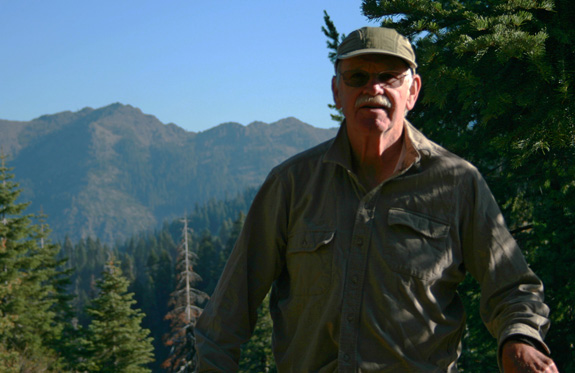
Once inside we would sit in the living room and chat, catching up with Jane, discussing a recent issue of Backpacker Magazine, or the latest developments in the world of conifers—eventually make our way to the car for lunch at the Sushi Spot in downtown Arcata. Just as the restaurant was pre-determined so was our order. Edamame, Klamath Rolls, and a pot of tea would stimulate several hours of conversations swirling with conifers, flowering plants, places, sustainability, and biodiversity across the Klamath Mountains. As we talked we delved into Klamath facts, theories, and hypotheses all the while reminiscing about wilderness trips across the range. For Sawyer, trans-Klamath adventures had been occurring for a long time. He knew and loved the landscape.
John joined the faculty at Humboldt State University in 1966, where he became Professor of Botany and soon a nationally recognized authority on plant ecology, conifers, and the vegetation and flora of California, especially of the Klamath Region. He was particularly proud of his cadre of graduate students (over 50 of them!) many of whom now occupy professorships, and responsible positions in state and federal agencies and the conservation movement around the country. John’s friendship and rigorous, theory-driven exploration of ecological ideas with his students and colleagues created personal and professional bonds that will last beyond a lifetime.
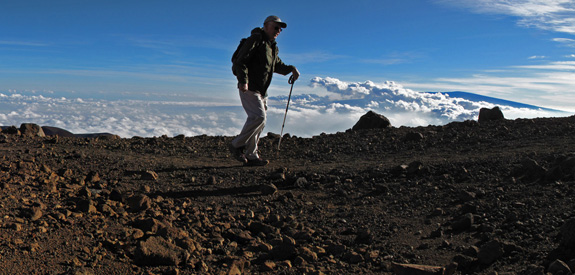
Sawyer never shied away from taking students into the field for hands-on experiences. He insisted everyone needed such adventures to learn about the natural world in a proper way. His class field trips included thousand mile bus rides to the Mojave Desert or shorter jaunts to trek students across, over, and around the ridges, canyons and mountain tops of the Klamath. All the while searching for plant species and piecing together patterns in the vegetation.
At the end of an era for pioneers, Sawyer and his colleagues were pioneering the understanding of large-scale landscape vegetation patterns. While he saw and loved the Western landscape broadly, he especially loved the Klamath Mountains and helped to define its flora. His countless hours of field research, extending well beyond his formal retirement, resulted in over forty scientific publications and three books – Trees and Shrubs of California, Northwest California: A Natural History, and A Manual of California Vegetation, which was adopted as the state standard for vegetation classification. This love of native plants led to him being active in the Save the Redwoods League and the Ecological Society of America. John was President of the California Native Plant Society (CNPS), and a founding member and first President of the North Coast Chapter of CNPS.
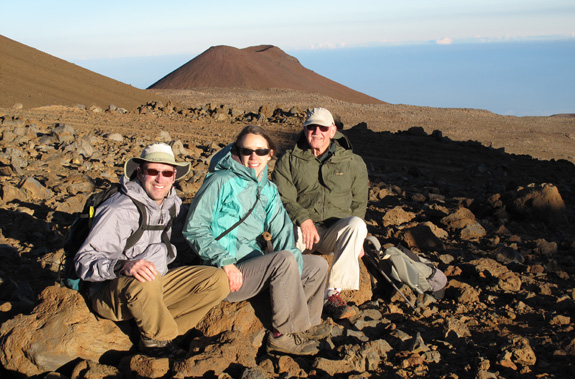
I think what most excited me about John was his love of wild places. When he spoke of ideal wilderness he did so with a twinkle in his eye and a giddy-up in his voice. Over the years I knew him he revealed many of the favorite places he adventured in search of plants and patterns—but the one that came up most often was the Russian Wilderness.
G. Ledyard Stebbins first made him aware of the rare conifers around Russian Peak and asked John to journey there to help establish a better understanding of the area for the Inventory of Rare and Endangered Plants of California organized by CNPS. In the late 60’s and early 70’s he, along with numerous colleagues and students, trekked through this country to inventory the plants (especially the conifers!). In Sugar Creek Canyon they found 400 species of vascular plants and in one roughly drawn square mile around Little Duck Lake he and Dale Thornburg discovered 17 species of conifers. They affectionately called this The Miracle Mile to celebrate the amazing diversity here. This work and the new understandings his research established ultimately led to the area’s preservation as the Russian Wilderness in 1984. Something he was undeniably proud of. I visited Sugar Creek with John in fall of 2011 looking for a reported 18th conifer, and though we did not find it, I will return to search again.
John was one of the strongest people I know. He was indefatigable in the face of his long term illness. No matter how sapped of energy through years of treatments, he never stopped laughing, learning, and sharing. Recently, his doctors told him that his options were exhausted and that his life could be prolonged somewhat, but the quality of it (most expressly his ability to walk and get around on his own) could not. He declined quickly in the summer of 2012 and died comfortably, at home with the people he loved nearby—under a canopy of redwoods.
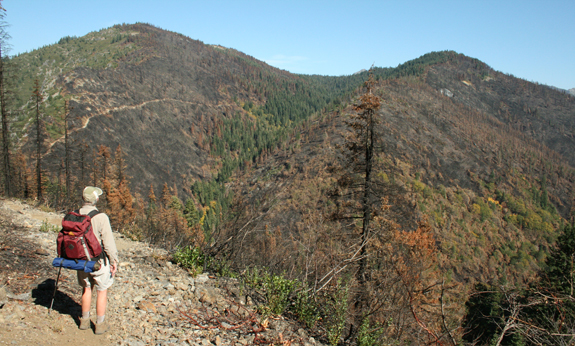
John influenced many of us as botanists, ecologists, biogeographers, and lovers of nature. But most importantly he was a model for the strength of the human spirit and the unalterable enjoyment of life through its ups and downs. His spirit and essence will always live on in our hearts and minds as well as in the wild places he so dearly loved.
I thank Jane Cole, Jim Smith, Todd Keeler-Wolf, Michael Mesler and Allison Poklemba for their contributions to this story.
A video filmed in the Siskiyou Wilderness in 2008.
COMMENT:
AUTHOR: Paul
DATE: 9/10/2012 12:41:59 AM
This is a very touching tribute-wish I had known John. The story covers all ages, I read parts of this to my five year old grandson and he also was moved by this narrative.
—–
COMMENT:
AUTHOR: Lauren Lester
DATE: 9/10/2012 2:02:08 AM
Very nice write up about a wonderful man. Thanks for sharing it Michalael
—–
COMMENT:
AUTHOR: John Soares
URL: https://productivewriters.com
DATE: 9/10/2012 12:52:09 PM
Beautiful tribute Michael. John was obviously a very special man.
—–
COMMENT:
AUTHOR: Joyce
DATE: 9/10/2012 3:33:06 PM
Nice tribute, Michael.
Mom
—–
COMMENT:
AUTHOR: John Palmer
DATE: 1/28/2013 8:32:04 PM
Thank you for such a nice tribute to an old friend and mentor. We enjoyed hearing you speak about him at his memorial. John was my major professor from 1972 to the end of 1979, when I finally finished my MA in vegetation ecology. He was a great man and I am so sorry I did not spend more time with him after grad school.
Conifer Country is a wonderful book which gives overdue praise to the vegetation of our region, and which is available to wider audiences than most botanical works. I am enjoying reading and re-reading it for the descriptions of the conifers and hikes to so many of my favorite places, especially your hike #20 into my study area in the Trinities.
Thanks for all of this Michael.
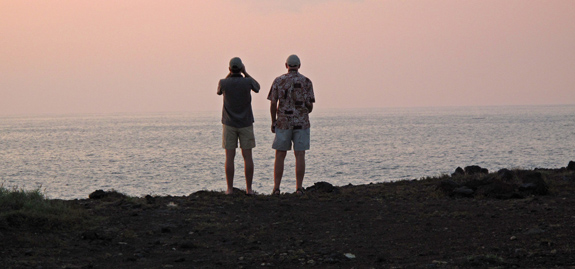
Very inspiring. The memory of his field trips are firmly planted in my brain as is his love affair with Sugar pines. I’d love to explore this area.